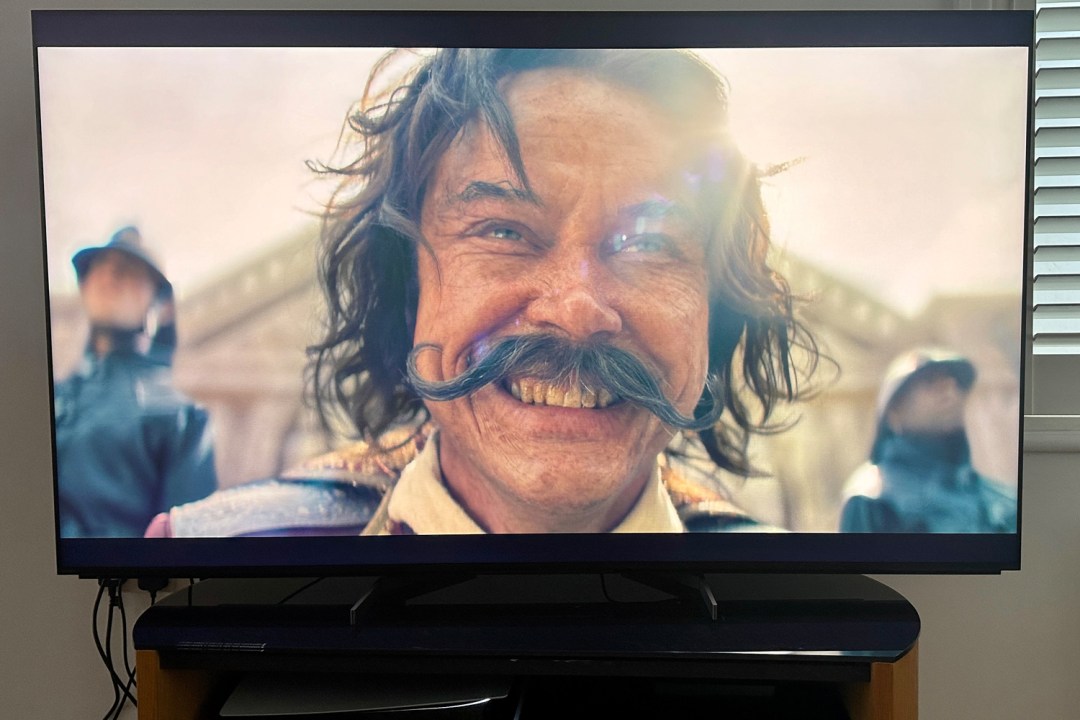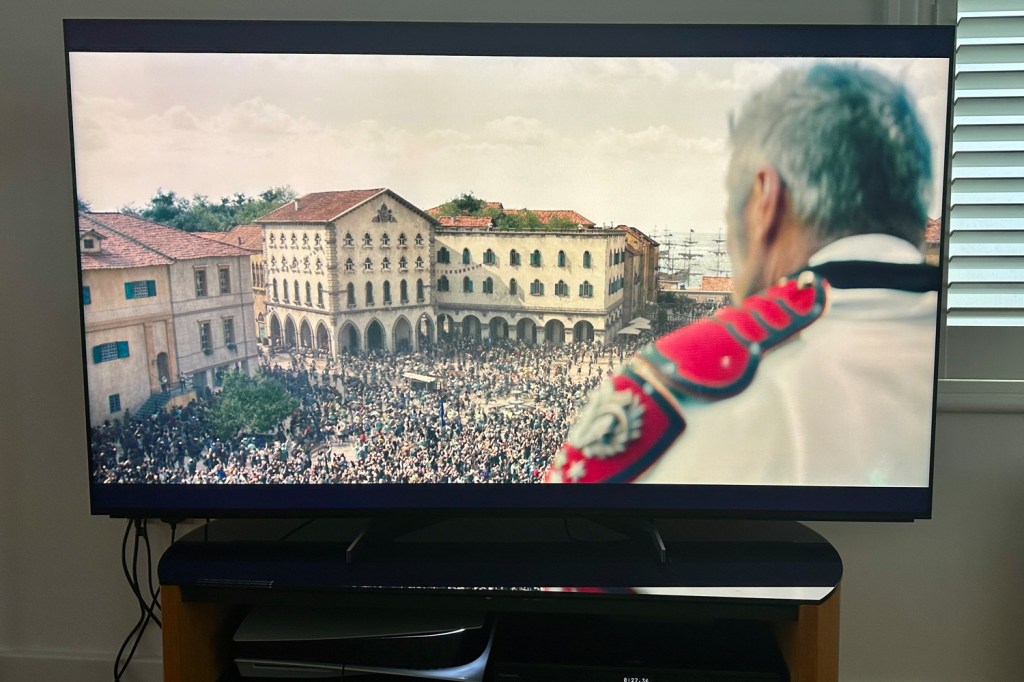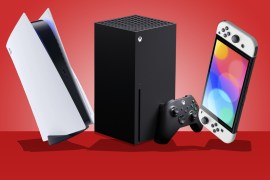Sony XR-65X95L review: it’s illuminating
mini-er LED, brighter-er picture

Stuff Verdict
Bigger, brighter, better (and heavier) than before, Sony’s new MiniLED range is a winner
Pros
- Bright, high-contrast and nicely composed images
- Comprehensive and logical smart TV interface
- Built and finished without apparent compromise
Cons
- Sound is rather toppy
- Still not the complete gaming solution
- Deeper and heavier than is fashionable
Why do you want from your next 4K TV? If you say something along the lines of “a big screen, with a big specification, that doesn’t cost especially big money”, I reckon you’re in the majority. Sony seems to think so, too – which explains the existence of this, the XR-65X95L.
Remarkably, it’s the smallest in a three-model range – but nevertheless we can all agree it’s a big screen. Its specification is big, too – certainly bigger than its asking price. But it’s by no means your only option – so what, if anything, would make you put your hard-earned Sony’s way?
How we test TVs
Every TV reviewed on Stuff is put through its paces with a mix of film, TV and game content, using a combination of streaming services, Blu-ray and console games. We use our years of testing experience to judge picture and sound quality, ease of use, and value for money. Manufacturers have no visibility on reviews before they appear online, and we never accept payment to feature products.
Find out more about how we test and rate products.
Design and build: heavy metal (and plastic)

Look at the Sony XR-65X95L from dead ahead and it’s basically all screen – which is, let’s face, all that any of us want from our new TV. The dark silver bezels are very slim, and the boomerang feet on which the TV stands are discreet too. The fact that you can put them in a few different positions – close together for use with a small surface or further apart, and with the option for them to raise the screen up enough for a soundbar to fit underneath – doesn’t do any harm either.
The combination of metal and plastic from which the X95L is made feels about as upmarket as it looks, too, and it’s all put together with the sort of confidence we’ve come to expect from Sony. But if you fancy wall-hanging your new MiniLED TV, you should probably be aware that it’s one of the heavier and deeper televisions around.
Ordinarily I work alone, but getting a 33kg, 65in TV out of its packaging meant I had to enlist some (grudging) help – and it also meant I wouldn’t dare trust my plasterboard partition wall to support its weight once it was unpacked. And anyway, at 62mm deep I’m not at all sure it would look all that elegant once it was up there…
Features: got game, sort of



It’s the ‘mini’ part of MiniLED that makes the difference, of course – and the Sony XR-65X95L has around 480 discrete dimming zones, all individually controllable. Which really should mean precise targeting of backlighting and impressive contrasts as a result – if it’s properly implemented, of course.
Sony’s Cognitive Processor XR is in charge of the process, and plenty more besides. Overall picture quality is its responsibility too – and to that end, the Sony’s 4K LCD panel is compatible with almost all the major HDR standards. Only HDR10+ is missing – and how significant you find that omission really depends on where you’re sourcing your 4K HDR content from. Really though, I can’t help but think it’s about time Sony just bit the bullet and made its 4K TVs play nicely with each and every HDR standard – other brands can do it, after all…
Naturally enough, the X95L has an absolute stack of wired and wireless connectivity available. Four HDMI sockets, a couple of USB slots, a composite video input and aerial posts for its integrated tuners should be enough to keep most people happy – and Bluetooth 4.2 plus dual-band wi-fi takes good care of wireless stuff, too. Compatibility with Apple AirPlay and Homekit, as well as Chromecast, means you shouldn’t have too much difficulty getting your favourite content on board one way or another.
Only two of those HDMI inputs are full-fat HDMI 2.1 standard, though, which is a pity (or annoying, depending on how committed a console gamer you are) – especially when you consider that a) one of them looks after eARC connectivity too, and b) Sony has otherwise made a bit of an effort where gaming is concerned. Each of those 2.1 inputs supports 4K@120Hz, VRR and all the other current-gen console features – and for Playstation 5 owners there’s also ‘Auto HDR Tone Mapping’ for absolutely top-notch HDR performance. Fire up your console and the TV offers you access to a pop-up menu with game-related options and information – so you can balance response time against motion control, for instance, or summon targeting crosshairs.
There’s no Dolby Vision game mode, though, and a response time of only slightly less than 20m/s with 4K@60Hz content is nothing special either. Further weirdness is apparent in the need to choose between Dolby Vision or VRR when gaming, too.
Audio performance is in the hands of Sony’s ‘Acoustic Multi-Audio+’ arrangement. It uses six drivers (two tweeters, two midrange and two bass) quite widely spaced around the frame – this way, Sony intends to create a bigger soundstage and a more overt sensation of ‘movement’ than would otherwise be possible. The array is powered by a total of 60 watts – each driver gets 10 of them.
Interface: big Google energy


The XR-65X95L, like all Sony’s current TV line-up, uses Google TV as a smart interface. It hogs the screen here just as completely as it does everywhere else, and it’s not quite as clever in its recommendations as it thinks it is – but nevertheless it has access to an absolute stack of content. And unlike other TV brands who currently suffer from Google’s antipathy towards the UK’s catch-up TV streaming services, Sony has simply specified Youview – and so iPlayer and all the rest are available.
Sony’s own Bravia Core is here too, which means streaming at a giddy 80Mbps is possible, and there’s support for IMAX Enhanced for some of the content. Your purchase of an X95L buys you 10 ‘premium’ Bravia Core movies and two year’s-worth of unlimited streaming of the less ‘premium’ stuff. Which is nice.
Because it uses Google TV, the Sony is compatible with Google Assistant voice control. One of the two remote control handsets that come with the TV has a ‘mic’ button – happily, it’s the nice one with the metal finish and not too many buttons, rather than the nasty one with the plastic finish and way too many buttons.
Performance: bright spark


It’s unlikely to come as a shock when I say that this 4K HDR TV looks its best when given some 4K HDR 10 content to deal with. No matter if it’s a Netflix stream of One Piece, a UHD 4K Blu-ray disc of The Shining or a Playstation 5-derived game of EA Sports FC 24 (the soccer title that’s almost entirely ‘taking penalties’), the Sony X95L is never less than watchable. Sometimes it’s downright impressive.
What’s initially most striking is the breadth and control of on-screen contrasts. The MiniLED configuration allows white tones to fairly pop from the screen, but with detail and nuance as much a part of them as their sheer brightness. And the Sony controls its backlighting well enough that even small areas of brightness in otherwise-dark scenes resist blooming well. Dark tones are just as nicely detailed as the whites, too, as contrasts are nuanced as well as wide-ranging.
In every other respect, the Sony acquits itself well where 4K content is concerned. Colours are vibrant, especially with Dolby Vision material – but they’re never shouty or overblown. Edge definition is good, and the X95L handles tight, complex patterns with real care – so even tricky clothing designs are stable and convincing. On-screen motion is handled with assurance, too – even the hectic on-screen action of a rank amateur playing FC 24 can’t provoke the Sony.
Switch down some less state-of-the-art content and the X95L proves a really capable upscaler. 1080p streams are stable and composed, with only a slight drop in fine detail retrieval and a minimal coarsening of colour variation really giving the game away. Motion is still believable, contrasts are still stark, and the overall image quality is stable and coherent. Even 720p stuff looks perfectly acceptable – any lower than that in terms of resolution, though, and the Sony starts, understandably, to struggle.
Despite the unremarkable nature of its input lag, the X95L is a perfectly fine gaming monitor, too. All the positives regarding movie picture performance – motion-handling, colour fidelity, low-light insight, you name it – is carried over in full. Some alternative products are more responsive, sure – but taken in isolation the Sony works admirably.
Sound, too, is better than your experiences may have led you to imagine – it’s certainly more composed and articulate than I was expecting. There’s really not much in the way of low-end body here, it’s true – but the X95L has scale on its side, as well as a nice facility for detail. Especially through the midrange (which is where most of the movie soundtrack is, of course), the Sony communicates quite readily. One of the best mainstream soundbars will deliver greater heft and better separation, sure – but the sound of this TV isn’t going to immediately drive you back to the store to spend more money.
Sony XR-65X95L verdict

Let’s face it: the bigger shock would have been if the Sony XR-65X95L hadn’t been up to much. But as it stands, only those committed console gamers need to think twice about this TV – for everyone else, it’s got what you need and then some.
Stuff Says…
Bigger, brighter, better (and heavier) than before, Sony’s new MiniLED range is a winner
Pros
Bright, high-contrast and nicely composed images
Comprehensive and logical smart TV interface
Built and finished without apparent compromise
Cons
Sound is rather toppy
Still not the complete gaming solution
Deeper and heavier than is fashionable
Sony XR-65X95L technical specifications
| Screen size | 65 (version tested), 75, 85in |
| Resolution | 3840×2160, 120Hz |
| HDR formats | HDR10, HLG, Dolby Vision |
| Inputs | 2x HDMI 2.1, 2x HDMI 2.0, composite video, digital optical audio, 2x USB, Ethernet, Wi-Fi, Bluetooth |
| Smart TV OS | Google TV |
| Dimensions | 1444x840x62mm, 32.2kg (panel only) / 1443x907x341mm, 33.7kg (with stand, widest position) |



